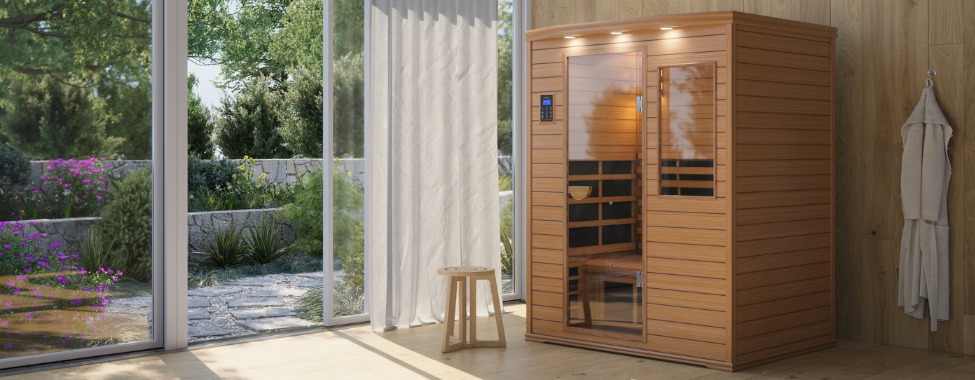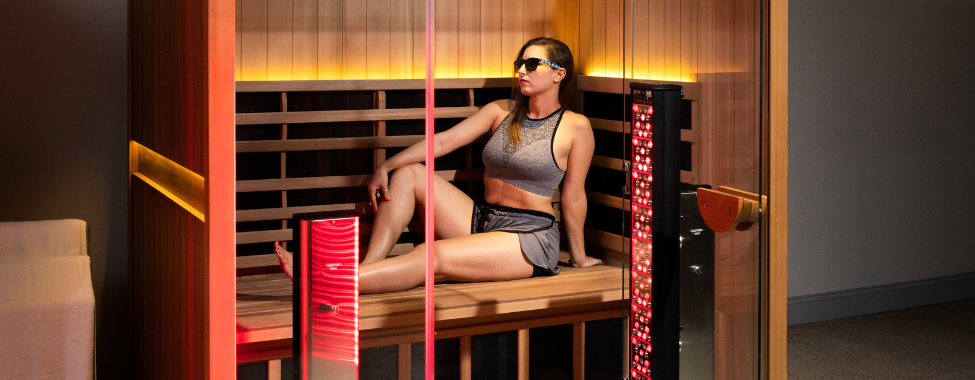- 24 Aug, 2025
- /
- Clearlight Infrared Saunas
- /
- No Comments
What’s the Best Wood for a Sauna?
Choosing the right wood for your sauna isn’t just a design decision, it’s a functional one. The type of wood used directly affects the sauna’s durability, performance, safety, and even the experience you get during each session. Whether you’re considering an indoor infrared sauna or an outdoor traditional model, understanding sauna wood types can help you make a smarter, longer-lasting investment.
Let’s explore why sauna wood matters, what to look for, what to avoid, and why premium materials like North American basswood and mahogany consistently come out on top.
Why Sauna Wood Matters More Than You Think
When exposed to consistent high heat, humidity, and body oils, not all wood holds up the same. Good sauna wood needs to:
- Withstand fluctuating temperatures
- Resist cracking or warping
- Remain cool enough to touch safely
- Be low in allergens and off-gassing
- Avoid strong odors that can become overwhelming
Beyond comfort, health and safety are important too. Poor-quality wood can release volatile organic compounds (VOCs), grow mold over time, or harbor allergens like natural resins. This is especially important for anyone using a sauna for wellness or recovery, where clean air and a soothing environment are priorities.
Well-constructed saunas also rely on secure fitting, like tongue-and-groove paneling, to ensure proper heat retention and structural integrity. Saunas built with high-quality hardwoods and expert construction not only look better, but also last longer and perform more consistently over time.

Top Sauna Woods (And How They Compare)
Here’s a breakdown of the most commonly used sauna woods and how they measure up in terms of quality, safety, and longevity.
| Wood Type | Durability | Odor | Allergy-Friendly | Best For |
| Basswood | Excellent | Neutral | Yes | Infrared saunas, sensitive users |
| Mahogany | Excellent | Slightly Earthy | Yes | Infrared saunas, premium builds |
| Cedar | High | Subtle Aromatic | No | Traditional and infrared saunas |
| Hemlock | Medium | Mild | Sometimes | Budget indoor saunas |
| Spruce | Medium | Slight | Not Always | Temporary or low-use units |
Basswood
North American basswood is hypoallergenic, odor-free, and an ideal choice for anyone with chemical sensitivities or respiratory concerns. It resists cracking and doesn’t off-gas at high temperatures. These qualities make it especially suitable for infrared saunas, where close proximity to the wood matters more.
Mahogany
Mahogany is a dense, durable hardwood with a rich color and long lifespan. It handles high heat and moisture beautifully, which makes it ideal for infrared saunas and more traditional steam-based setups. While it has a very mild scent, it’s generally well-tolerated even by sensitive users. Its natural resistance to mold and insects is another bonus.
What to Avoid: Woods That Don’t Belong in a Sauna
Not every wood species can tolerate the harsh environment of a sauna. Some emit too many oils or toxins, while others simply don’t hold up. Avoid:
- Soft Pine or Plywood: Prone to splintering, warping, and off-gassing.
- Resinous Woods, Like Types of Pine or Fir: These can ooze sap when heated.
- Treated or Composite Wood: These can release harmful chemicals when heated if used on the interior of a sauna, though could be appropriate for an exterior.
While cheaper saunas might use these materials to cut costs, you’ll often find they wear out faster, smell unpleasant, or even pose health risks over time.
Indoor vs. Outdoor: Does the Location Change the Wood Choice?
Absolutely. Where you install your sauna affects what materials are best.
Indoor Saunas
For indoor infrared saunas, North American basswood and mahogany are top choices. They stay cool to the touch, emit no strong odors, and maintain a neutral aesthetic that blends with most home interiors.
Outdoor Saunas
Outdoor saunas face more environmental stress, including rain, UV rays, and temperature swings. In these cases, mahogany is a superior interior choice, while engineered or treated woods are often used on the exterior for added durability and longevity.
For example, a high-end outdoor sauna might feature engineered outer panels for moisture protection and mahogany inside for heat performance and user comfort.

Why Premium Materials Are Worth It
Cheaper saunas might look fine at first, but they often use subpar wood and shoddy construction techniques that lead to:
- Faster degradation
- Unpleasant smells
- Air quality concerns
- Difficult maintenance
- Uncomfortable feeling
- Limited lifespan
Investing in a sauna made with sustainably sourced hardwood and expert craftsmanship gives you more value in the long run – not just in how the sauna looks, but how it feels, performs, and holds up over time. Well-built saunas also retain heat better, reducing energy use and enhancing the therapeutic effects of each session.
Sustainability Matters, Too
Environmental responsibility is another important consideration when choosing a sauna.
For example, some manufacturers are taking extra steps to offset their environmental footprint. For example, at Clearlight for every sauna purchased, we donate to plant two trees through the National Forest Foundation. This ensures that each unit not only supports your wellness but contributes positively to global reforestation efforts.
Additionally, At Clearlight Infrared®, this focus on quality extends to every detail. Both the Clearlight Premier™ and Clearlight Sanctuary™ models are crafted from eco-certified, grade “A” clear mahogany or North American basswood, two of the most reliable and safe sauna woods available. These materials aren’t just selected for performance, they’re part of a broader commitment to sustainability.
The belief is simple: A healthier planet supports healthier people. That’s why Clearlight sources responsibly harvested wood and chooses materials that minimize environmental impact. By reducing toxins in the environment, we help reduce the toxins your body is exposed to – creating a wellness space that’s better for you and the world around you.
When you choose a sauna built from responsibly harvested mahogany or basswood, you’re making a more sustainable choice that aligns with long-term wellness, both personal and planetary.
FAQs About Sauna Wood
What’s the safest wood for people with allergies or sensitivities?
North American basswood is widely considered the safest, thanks to its hypoallergenic and odorless properties.
Can I use cedar if I’m sensitive to scents?
Cedar has a subtle, aromatic scent that can be overwhelming for people with multiple chemical sensitivities. It also contains natural resins that may trigger allergies. It’s not recommended for those with sensitivities.
Is the wood in a sauna difficult to maintain?
Not with the right construction. Premium hardwoods like basswood and mahogany resist warping, cracking, and mold. Maintenance usually involves gentle cleaning with a non-toxic cloth and periodic inspections for wear.
Why does tongue and groove construction matter?
This design ensures panels fit tightly, keeping heat in and moisture out. It’s a sign of better craftsmanship and longer-lasting performance.
What’s the difference between indoor and outdoor sauna materials?
Indoor saunas prioritize comfort and hypoallergenic woods like basswood. Outdoor units need durable exteriors (engineered wood) and robust interiors like mahogany to withstand environmental exposure.
Choosing the Right Wood for Your Sauna
When it comes to buying a sauna, the type of wood used is one of the most important decisions you’ll make. It affects everything from how the sauna performs to how long it lasts to how it impacts your health. Choosing high-quality, sustainable wood like North American basswood for indoor infrared saunas or mahogany interiors for outdoor models ensures that your investment is not only beautiful but safe, durable, and responsible.
If you’re looking for a long-term addition to your wellness routine, prioritize craftsmanship, sustainable materials, and wood types that are proven to perform.
 Canada
Canada Australia
Australia New Zealand
New Zealand Germany
Germany UK
UK EU
EU Ireland
Ireland Malaysia
Malaysia China
China Japan
Japan




